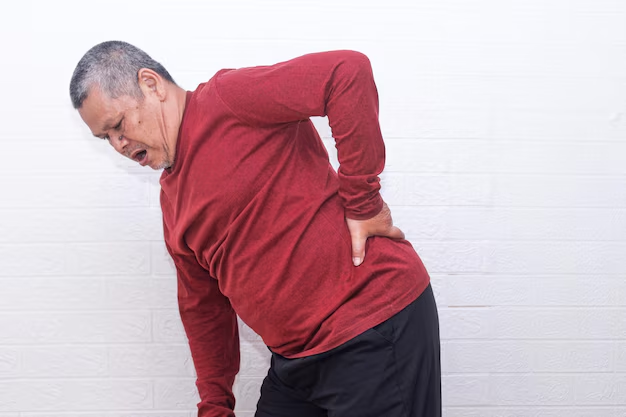Understanding Adult-Onset Scoliosis: What You Need to Know
Imagine waking up one day and realizing that your once straight-backed stride now favors a slight lean to one side. It's a subtle change, but one that's starting to nag at you more each day. As adults, we often think that certain conditions are a relic of our younger years. However, health issues like scoliosis can sometimes make an unexpected entrance later in life. Can you get scoliosis as an adult? Let's delve into this intriguing question, explore the factors at play, and consider what steps you can take if you find yourself confronted with this condition.
What Is Adult Scoliosis?
Scoliosis is a condition characterized by an abnormal curvature of the spine. Typically identified during adolescence, scoliosis is often mistaken as a childhood-only concern. However, adult-onset scoliosis is a reality for many, usually emerging due to age-related changes or previous undetected conditions.
Types of Adult Scoliosis
Adult Idiopathic Scoliosis: These are cases where scoliosis began in adolescence but went unnoticed or untreated until adulthood.
Degenerative Scoliosis: Commonly referred to as de novo scoliosis, this type develops directly in adulthood, primarily due to spinal degeneration. It's more prevalent in individuals over the age of 50.
Causes and Risk Factors
Understanding the causes of adult scoliosis can help demystify why it can suddenly appear. Here are a few factors to consider:
- Aging and Degeneration: The spine undergoes wear and tear as we age. This degeneration of spinal discs and joints can lead to a curvature.
- Osteoporosis: This condition weakens bones and can facilitate the curvature associated with scoliosis.
- Genetics: A family history of scoliosis can increase the likelihood of developing the condition.
- Previous Surgeries or Injuries: Past spinal operations or significant injuries can contribute to adult-onset scoliosis.
Recognizing the Symptoms
Spotting scoliosis in adults can be tricky, as the symptoms may be subtle or overlap with common ailments associated with aging. Here’s what to watch out for:
- Uneven Shoulders: One shoulder appearing higher than the other.
- Back Pain: Persistent or worsening back pain, which may be localized or radiate through the body.
- Uneven Waist: Asymmetry in the waist's appearance.
- Difficulty Standing or Walking: A noticeable lean or trouble maintaining balance.
Misdiagnosis Concerns
Due to the overlap of scoliosis symptoms with other conditions such as arthritis or general back pain, there is potential for misdiagnosis. It's important to seek comprehensive medical evaluations if you suspect scoliosis.
Diagnosis: What to Expect
Diagnosis typically begins with a thorough medical history and physical examination. If scoliosis is suspected, imaging tests such as X-rays, MRIs, or CT scans are employed to confirm the curvature and assess its impact.
Speaking with Healthcare Providers
When consulting a healthcare provider, consider discussing:
- The onset and progression of symptoms.
- Any family history of scoliosis.
- Previous back injuries or surgeries. This information can aid in forming a clear picture of your condition.
Living with Scoliosis
Upon diagnosis, it’s crucial to understand how scoliosis might impact daily life and the strategies available to manage it.
Non-Surgical Management
- Physical Therapy: Exercises can help strengthen the muscles supporting the spine, potentially reducing discomfort and improving posture.
- Pain Management: Over-the-counter pain relievers or prescribed medications can aid in managing pain.
- Bracing: In some cases, wearing a brace may help slow progression and provide support.
When is Surgery Considered?
Surgery is typically reserved for severe cases where curvature is pronounced, or pain and dysfunction significantly impair normal activity. Procedures may involve spinal fusion or other corrective techniques.
Embracing Prevention and Wellness
While scoliosis may develop spontaneously due to factors beyond control, maintaining a healthy lifestyle can support spinal health.
Tips for Spinal Health
- Regular Exercise: Engage in activities that strengthen the core and improve flexibility.
- Healthy Diet: Consuming a diet rich in calcium and vitamin D fosters bone health.
- Posture Awareness: Maintaining good posture can alleviate unnecessary strain on the spine.
Potential Role of Alternative Therapies
Some individuals explore alternative therapies such as chiropractic care, acupuncture, or yoga to complement traditional treatments. These should be discussed with a healthcare provider to ensure they fit safely into your care plan.
Key Takeaway Insights
Understanding scoliosis in adulthood requires recognizing that it's a manageable condition when addressed proactively. While it may seem daunting, knowledge and proactive management are pivotal.
- Stay Informed: Knowledge is empowering; equip yourself with information about scoliosis.
- Early Intervention: Addressing symptoms sooner rather than later can greatly impact management success.
- Holistic Health Approach: Consider not just the spine, but overall health and well-being in managing the condition.
Ultimately, the journey with adult scoliosis is highly individual, but with the right tools and mindset, it is possible to lead a fulfilling life.
Quick Summary: Adult-Onset Scoliosis Insights 📌
- Types: Idiopathic (from youth) vs. Degenerative (adult-onset)
- Symptoms: Back pain, uneven shoulders/waist, balance issues
- Diagnosis: Critical to differentiate from other spinal/health issues
- Management: Physical therapy, pain management, possible surgery
- Prevention: Exercise, diet, posture, alternative therapies
- Approach: Early intervention and informed care are key 🧠🦵💪
📋 Approach each day with dedication to improvements and open communication with healthcare providers for better spine health!
